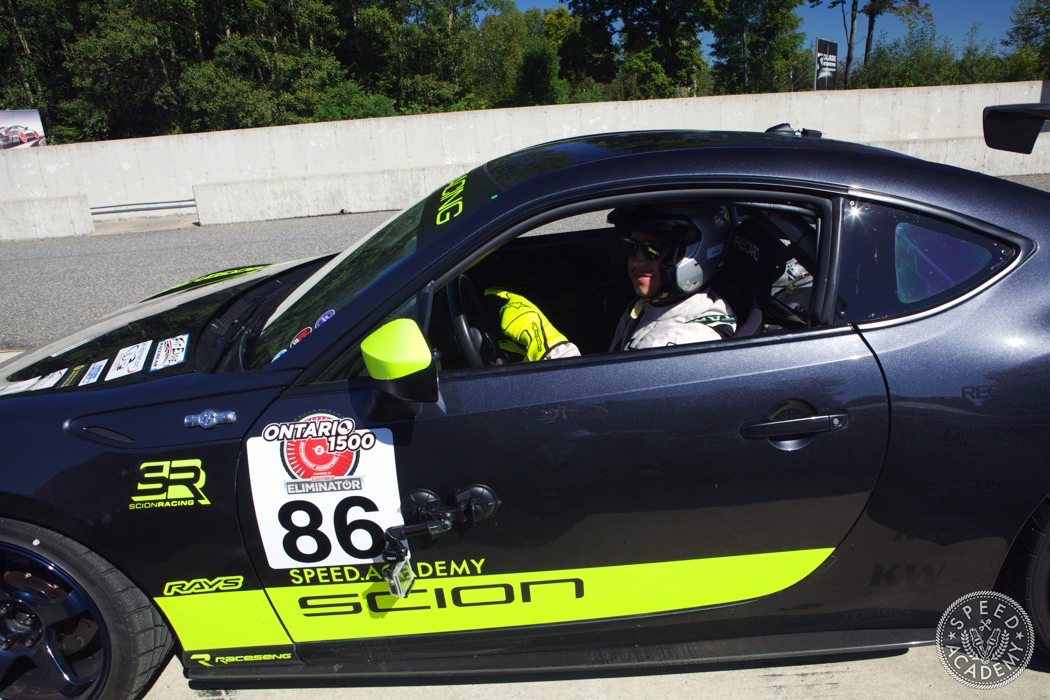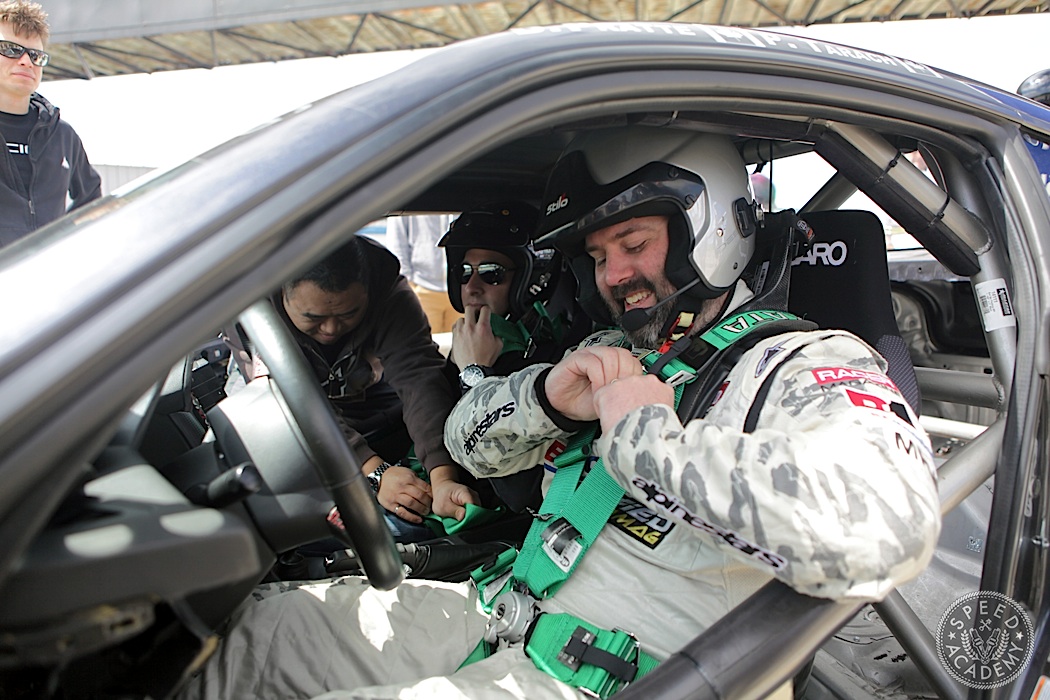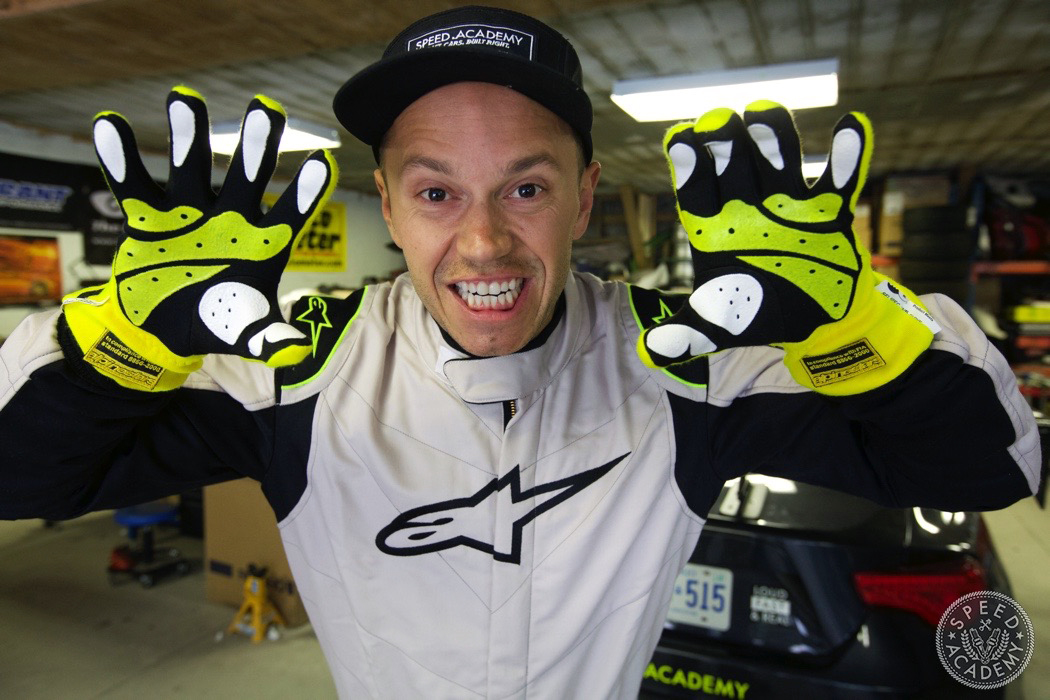We’ve had quite a few requests to shoot a video on driving techniques for the race track, and although we do plan to shoot a video on that subject in the Spring, I thought I’d put together a story covering some of the basics as a way of giving you aspiring hot-shoes something to read during the off-season.
For starters, lets cover driving position relative to the steering wheel, shifter and pedals. First of all, unless you’re in a Formula car, forget that gangster lean. At the race track, you want to be seated in an upright position for the best forward visibility possible while still having sufficient headroom to wear a helmet.
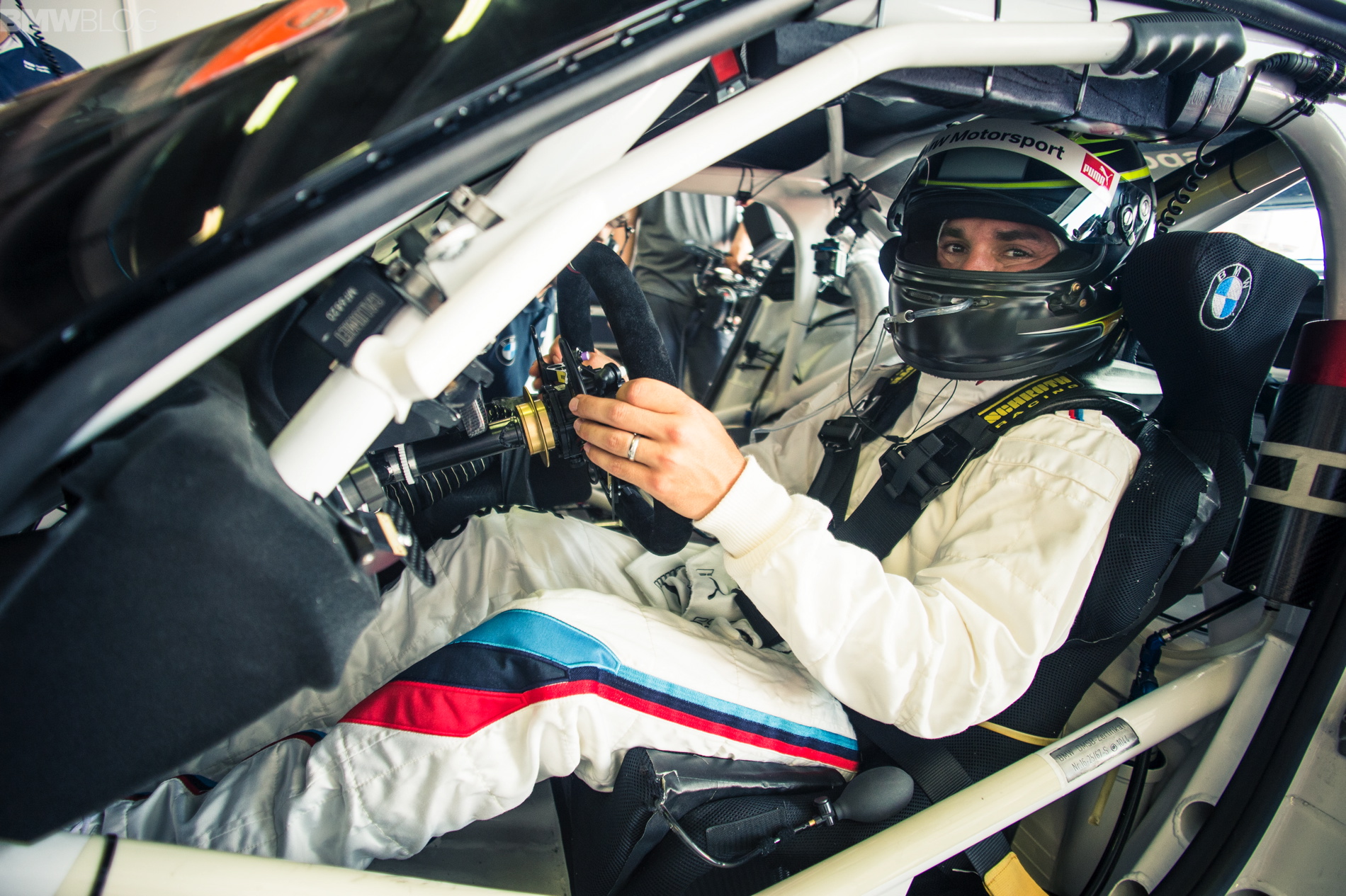
Source: http://cdn.bmwblog.com/wp-content/uploads/2015/06/bmw-z4-gt3-zanardi-images-30.jpg
You also want to be a lot closer to the steering wheel than you’re probably accustomed to. It’s going to feel weird at first, but with your hands at 9 & 3 on the steering wheel you want to be sitting close enough to have about a 90-degree bend at the elbows. A simple way to put yourself in a good position relative to the steering wheel is to move the seat forward until you can rest the bottom of your wrists on the top of the steering wheel with your arms comfortably extended and your back firmly in the seat.

Source: http://www.playseat.com/page_content_files/rbr1_images/webber1_b.jpg
The reason for this is simple. The closer you are to the wheel, the faster and farther you can turn it before your wrists come together. If you hold a book or something that simulates a steering wheel in your hands and hold it out in front of you with your arms fully extended and then turn left and right until your wrists come together and then repeat this with a 90-degree bend in your elbows you’ll see that you can turn the wheel farther and faster. You may not have guns like Mark Webber, but as you can see he’s got a nice bend in his elbows and knees in this F1 simulator. In a road car you’ll obviously be in a much more upright seating position, but Webber’s body is otherwise in an excellent position for performance driving, even if this is just a video game simulator.

Source: http://s.hswstatic.com/gif/engine-lose-power-4.jpg RELAX, BRO!
The other advantage of being closer to the steering wheel is that it allows you to relax your shoulder muscles. While you’re at it, make sure to relax your grip on the wheel too. If you’re strangling the wheel like your life depends on it, you’re reducing how much subtle information the wheel can communicate to you through the steering system, plus you’re exerting energy and putting strain on your hands and forearms that will wear you out after a few laps. If you’re a golfer, you’ll be familiar with the importance of relaxing your grip and reducing muscle tension in the upper body so that you’re able to move more freely and athletically, and the same principles apply to high performance driving. The dude in the image above is DOING IT WRONG.
Pro Tip: If your steering wheel is slippery and that makes it hard for you relax your grip while still maintaining a secure and confidence-inspiring connection, try a set of racing gloves with a grip enhancing surface on the palms and fingers like these Alpinestars gloves we use. These have printed silicone palms and fingers for superb grip and they also have pre-curved fingers for added comfort and reduced fatigue.
The saying “smooth is fast” is something you’ll hear at just about any race school, and for good reason. Watch in-car video of a top notch driver and you’ll notice all of their inputs are smooth and as minimal as possible. The reason for this is simple: smooth inputs will result in less drastic weight transfer and that means the car’s mass is more evenly distributed across its four contact patches, which in turn means you’ve got more grip and better traction. Conversely, rough, jerky driver inputs (I’m talking steering as well as shifting, braking and applying the throttle) will upset the car’s balance, cause rapid weight transfer which can induce sudden understeer or oversteer by overloading some tires while unloading others, all of which kills momentum and robs speed. Watch this quick summary above from Ross Bentley of Speed Secrets fame for an excellent summary of why smooth is fast.
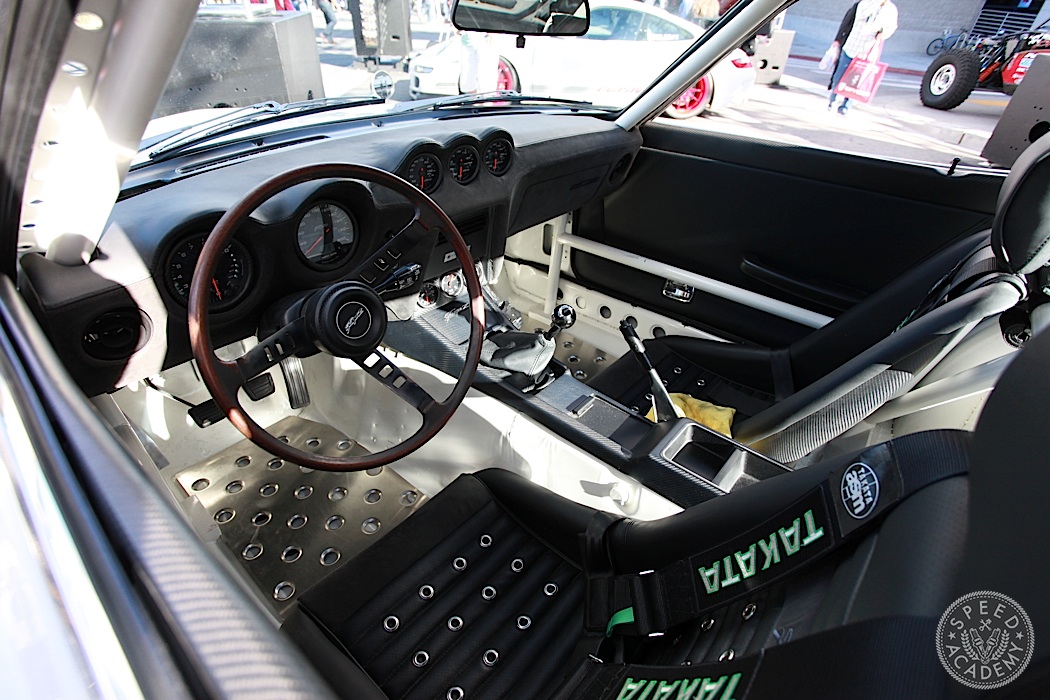
Can you imagine driving a car as awesome as the Fugu Z with anything other than a good, old fashion manual transmission? Answer: No. No you cannot.
Ok, so now that you’re sitting in the correct position and understand why smooth is fast, lets talk about how you can work on smoothness. If you’re driving a car with a manual transmission — and PLEASE tell me you’re driving a manual if you take your car to the track with any regularity — perhaps the biggest challenge is learning to downshift smoothly.

But first, a pep talk. Please don’t rob yourself of the involvement and connection that comes with driving a car with a manual transmission. Learning to heel & toe downshift takes time and effort, but the feeling of perfectly rev-matching while braking and downshift and then rolling back onto the throttle in a perfectly orchestrated sequence of driver inputs is one of the purest joys you can experience from behind the wheel.
You’ll get a good look at my heel & toe downshifting technique in this video starting at the 6:53 mark. I’m by no means the benchmark of heel & toe excellence, but I’ve been working at it for the better part of a decade now and have a pretty good handle on it. But it took a lot of practice before it became second nature, such that I wasn’t having to think about the timing or coordination of the gear change and throttle blip. It all just happens via muscle memory now, which frees my limited brain capacity up for more important things, like not crashing.

Source: http://www.drivingfast.net/images/car-control/heel-toe/3.png
For those of you who aren’t sure why heel & toe downshifting is even a thing, the reason to blip the throttle when downshifting is to match engine speed to the road speed of your car. By synching these up as best you can with a blip of the throttle while braking and downshifting for a corner, the clutch can engage smoothly without causing a sudden rise in RPM known as engine braking. In severe cases a poorly synchronization downshifts with no rev matching can lock up the drive wheels completely. In a FWD car this will result in severe understeer and in a RWD car sudden and potentially dangerous oversteer, both of which upset the car’s balance and slow you down.
Personally I find the name “heel & toe” a bit deceiving, since most driver’s (myself included) rev match with the technique seen in the video above. As you can see, the ball of the foot is used on the brake pedal and then the heel of the foot is rotated towards the throttle (thus the name “heel & toe”), but it’s actually the middle of the outside of the foot that ends up on the throttle pedal during the blip. So don’t fixate on the heel part of the term, and instead simply think of it as rotating the back of your foot towards the throttle while braking so you can blip the throttle with the outside of your foot while downshifting and releasing the clutch. There’s a lot of things all going on at once here, so getting the timing just right on your blip, downshift and clutch release takes practice.
Source: http://teamspeed.com/forums/attachment.php?attachmentid=36445&stc=1&d=1257538971
Ok, so you’re committed to becoming a heel & toe pro, and since part of this process involves using the brakes, lets talk more about that all-important middle pedal. I know most of you are in love with the throttle pedal (and so am I!), since it makes cool noises and results in acceleration. But it’s actually your use of the brake pedal that is, more often than not, going to have the greatest impact on your lap times.

Source: https://pavemaintenance.wikispaces.com/file/view/Figure_2_pavement_friction_vs_tire_slip.jpg/207423378/Figure_2_pavement_friction_vs_tire_slip.jpg
That’s because unlike using the go-pedal, using the slow-pedal is somewhat counterintuitive, at least at first. The tendency of most novice track drivers is to not brake enough at first, which forces them to add more and more braking pressure as they approach the turn-in point, sometimes to the point of going past that critical slip point where braking force and tire grip are maxed out and the tire starts to slide rather than grip. This causes greater and greater forward weight transfer, which in turn overloads the front tires and tends to result in understeer and blowing past your turn-in point.

Source: http://biketrackdayshub.com/wp-content/uploads/2012/06/images_MotorcycleBrakingTips.jpg
The proper technique is to smoothly ramp up to maximum braking force (or threshold braking) early in the braking zone and then gradually reduce brake pressure as you approach the turn-in point. This results in a better balanced car when you initiate the turn, and if you go back to that Speed Secrets video you’ll recall that cornering speed is all about balance and the traction that comes with it.

Source: http://www.structive.com/hosted/trailbraking.gif
Once you’ve got a handle on threshold braking and getting most of your braking done early so you can balance the car for corner entry, it’s time to try some trail braking. This is a fairly advanced technique used to adjust the car’s handling balance, so if your car tends to understeer (and most cars do), trail braking can reduce understeer or even induce oversteer by putting a little extra weight on the front tires and a little less on the rear tires while turning. The above diagram suggests trail braking all the way to the apex, but in my experience it’s most effective in that 90% to 60% zone, at which point I’m usually off the brakes and back to wide open throttle or close to it, if I’ve judged my entry speeds correctly.
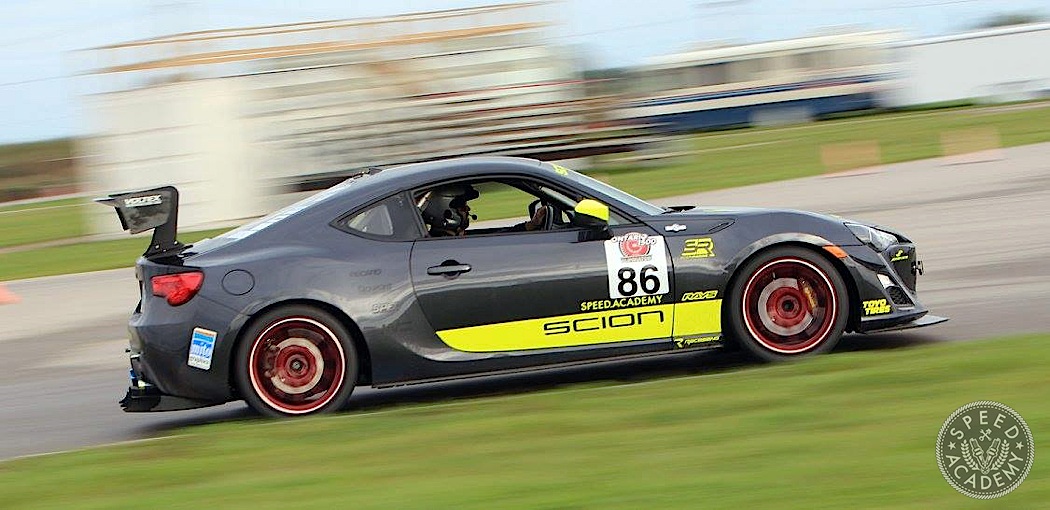 Ok, I think that’s a pretty decent primer for you aspiring Time Attackers and track day heroes out there, but if there’s anything we’ve missed or would like us to expand on, just leave us a note below or shoot us an e-mail. And remember, there’s no substitute for seat time. Practice, practice, practice and more practice is what you need to master these techniques and go faster at the race track. Be safe and happy holidays!
Ok, I think that’s a pretty decent primer for you aspiring Time Attackers and track day heroes out there, but if there’s anything we’ve missed or would like us to expand on, just leave us a note below or shoot us an e-mail. And remember, there’s no substitute for seat time. Practice, practice, practice and more practice is what you need to master these techniques and go faster at the race track. Be safe and happy holidays!
